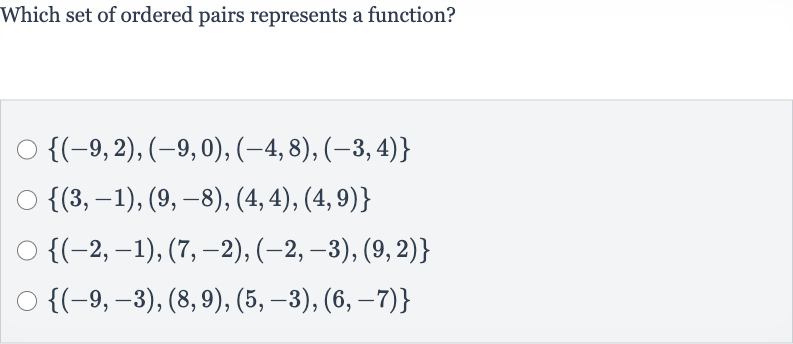AI tutor
Full solution
Q. Which set of ordered pairs represents a function?
- Check for Function: A set of ordered pairs represents a function if each input (first component of each ordered pair) corresponds to exactly one output (second component). We will check each set of ordered pairs to see if any input value is repeated with different output values.
- Set Analysis: Examine the first set . The input value corresponds to two different output values, and . This violates the definition of a function, so this set does not represent a function.
- Set Analysis: Examine the second set . The input value corresponds to two different output values, and . This also violates the definition of a function, so this set does not represent a function.
- Set Analysis: Examine the third set . The input value corresponds to two different output values, and . This again violates the definition of a function, so this set does not represent a function.
- Set Analysis: Examine the fourth set . Each input value corresponds to exactly one output value. There are no repeated input values with different outputs. This set satisfies the definition of a function.
- Identify Function Set: Since the set is the only one where each input has a unique output, it is the set that represents a function.
More problems from Is (x, y) a solution to the system of equations?
QuestionGet tutor help
QuestionGet tutor help

